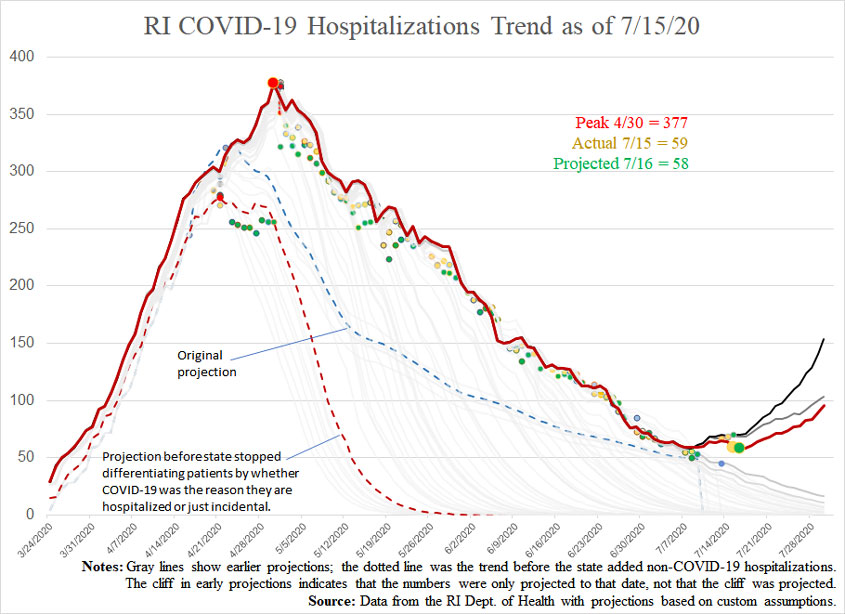Data Doubts and Games with Models, 7/15/20 Data
Americans are finding ourselves in a position of not knowing whom to trust on COVID-19.
It seems more than once in the past week, I’ve had occasion to point out that the medical establishment, including the Centers for Disease Control (CDC), pretty clearly lied to the public about the effectiveness of masks early on in the pandemic. They arguably did so with good intentions (helping to save equipment for medical personnel and at-risk populations), but it was still a lie. We got another dose of that when the “experts” fell over themselves to downplay the risks of massive progressive protests.
So, here we are, with the Trump administration moving data up the bureaucratic scale from the CDC to its parent agency, the Department of Health and Human Services, and the chatter is that this is somehow proof that the administration is going to “politicize science,” or some such. Some of us feel that the science has already been politicized, and there’s a chance this will actually reduce the problem.
The administration’s stated goals are to increase the speed of reporting and to increase the percentage of hospitals included. We’ll see how it goes. For the time being, pure hype and assumptions that the administration will actually be hiding and manipulating data seem to be susceptible to one of two criticisms: either that the accusers simply prefer the data to be manipulated toward another conclusion, or that they’re on the side of the bureaucracy more than they’re on the side of elected officials who are directly answerable to the public for their performance.
This bureaucratic turf war comes just as evidence emerges that testing sites in Florida have been misreporting their data, in some cases as dramatically as reporting a nine-something-percent positive test rate as a ninety-something-percent positive test rate. As Instapundit Glenn Reynolds asks, “How does this happen?” One might also ask, “Why would they do that?” Maybe the Trump administration’s new reporting system will help to catch this sort of (ahem) error. Again, we’ll see.
Along similar lines, Rhode Island Democrat Governor Gina Raimondo’s administration today reported a nearly 15% drop in COVID-19 hospitalizations from what was reported yesterday. Part of that came from a batch of nine hospital discharges. As I’ve been noting, the numbers were going up not because more people were going into the hospital, but because fewer were leaving (in the good way or the bad one).
Another reason for the drop, however, was that the numbers were revised down significantly, as the chart below shows in the gap between the black line and the red one. Remember those headlines about the huge increase in hospitalizations over the weekend? Nevermind. The new numbers suggest the increase never got over 65 patients, not to 70. At the same time, the low point from last week was revised up, from 56 to 58 now to 59. So, rather than a scary 21% increase, we’re now being told that surge was actually 10%, and it appears to be fading.
How does this happen?
As the governor tightens enforcement of her rules because of her disappointment in restaurant owners, young adults, and beach-goers, Rhode Islanders should ask her a question reporters probably won’t: If these are the results we’re getting with this level of compliance, then so what? She should be easing the restrictions, not cracking down.

(See here for my original methodology and here for a subsequent modification I made. A thorough explanation of the chart is included in this post.)
Projections versus actuals (date of report).
- Cases:
- Projection for 7/15: 17,647
- Actual for 7/15: 17,640
- Projection for 7/16: 17,705
- Hospitalizations:
- Projection for 7/15: 70
- Actual for 7/15: 59
- Projection for 7/16: 58
- Deaths:
- Projection for 7/15: 988
- Actual for 7/15: 987
- Projection for 7/16: 991




